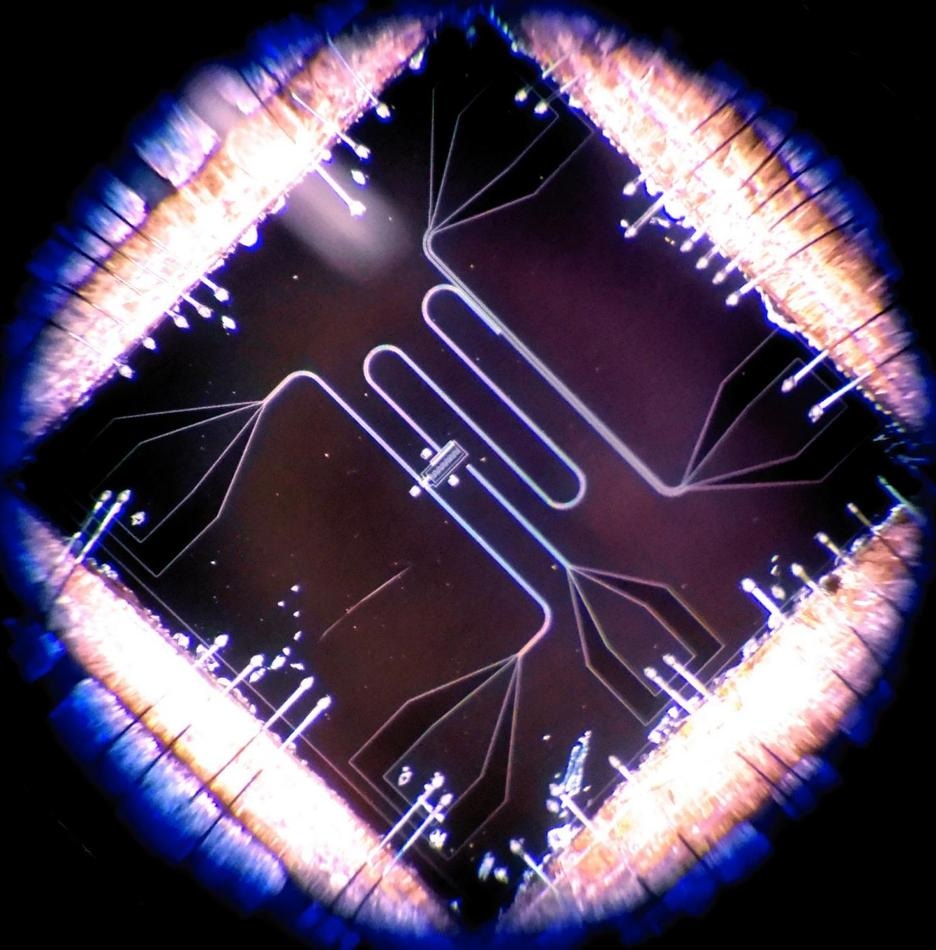Feb 11 2019
It is quantum physics that establishes the laws dominating the universe at the nanoscale. Hopefully, the potential to harness quantum phenomena will help in building machines similar to quantum computers, which are expected to carry out specific calculations in a relatively faster way when compared to traditional computers.
 Superconducting circuits comprising a transmon device can be used for quantum state control. (Image credit: Dong Lan and Sorin Paraoanu)
Superconducting circuits comprising a transmon device can be used for quantum state control. (Image credit: Dong Lan and Sorin Paraoanu)
However, there is one significant challenge when it comes to designing quantum processors—the capability to control and track quantum systems in real time is an arduously fragile work. Careless manipulation of these systems will introduce considerable errors in the final result. Now, thanks to a recent study performed by researchers at Aalto University, these fragile operations can possibly be performed as fast as possible.
To reach this point, the team was able to control the quantum phenomena in a customized electrical circuit known as a transmon. When a transmon chip is cooled within a few thousandths of a degree over absolute zero, the device steps into the quantum world and begins to act like a synthetic atom. One quantum aspect that appealed to the team is that the transmon’s energy can only take certain values, referred to as energy levels. The energy levels can be compared to steps on a ladder—a person ascending the ladder has to halt on one step and cannot linger somewhere in-between the two steps. In a similar way, the transmon’s energy can only represent the set values of the energy levels. When microwaves are illuminated on the circuit, the energy can be absorbed by the transmon, which ascends the ladder rungs.
In a study reported in the journal Science Advances on February 8th, 2019, a research team at the Aalto University, headed by Docent Sorin Paraoanu, Senior University Lecturer in the Department of Applied Physics, has successfully made the transmon jump more than a single energy level in one go. Earlier, this could only be achieved by making very slow and gentle adjustments to the microwave signals controlling the device. In the latest study, an extra microwave control signal molded in a highly specific way promotes a rapid and highly accurate change of the energy level.
We have a saying in Finland: “hiljaa hyvää tulee” (slowly does it). But we managed to show that by correcting continuously the state of the system, we can drive this process more rapidly and at high fidelity.
Dr Antti Vepsäläinen, Study Lead Author, Aalto University
One of the coauthors, Dr Sergey Danilin described quantum control—the process of utilizing chips like transmons to develop quantum computers—by extending the analogy of “climbing a ladder”. “To get a useful quantum system, you need to imagine climbing a ladder while holding a glass of water, it works if one does it smoothly—but if you do it too fast the water will be spilled. Certainly this requires a special skill.”
The teams discovered that in the quantum world, the trick for ascending the ladder rapidly without dropping any water is to meticulously jump two rungs at a time! Such a short-cut up the energy ladder was realized by making the transmon to simultaneously absorb two entirely varied microwave photons. In addition, the laws of nature put a limitation on how fast a quantum energy switch can occur, even in the case of short-cuts, and such a limitation is known as the quantum speed limit. To the researchers’ delight, they discovered that their latest technique led to changes to the energy level that occurred at rates around this hypothetically calculated limit.
The researchers found it equally exciting by the wider effect of being able to regulate high-speed transfers of energy in quantum systems. Quantum computing as well as quantum simulation applications is of potentially high significance, requiring extremely powerful and rapid operations like state preparation and the development of quantum gates.
In the quickly-developing field of quantum technologies, this latest control method could find multiple applications.
We would like to understand more deeply the processes related to energy transfer, which are ubiquitous in the natural world and in the technological marvels that surround us. For example, are there any fundamental limits to how fast we can charge the battery of an electric car?
Dr Sorin Paraoanu, Senior University Lecturer, Department of Applied Physics, Aalto University